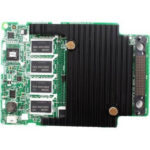The APEGS competency assessment is an essential step in the licensing process for professional engineers and geoscientists. Providing tailored examples in your APEGS Report is vital to demonstrate your qualifications and readiness for independent practice. This article outlines a comprehensive strategy to tailor examples effectively by focusing on alignment, clarity, relevance, and professional growth.
Decoding the Purpose of the Competency Framework
Establishing the Foundation of the Assessment
The competency assessment process evaluates whether applicants meet the necessary standards for independent professional practice. The framework includes specific indicators grouped under key categories that reflect real-world responsibilities. These competencies range from project execution to ethical practices and communication.
Why Tailored Examples Matter
Reviewers expect personalized, authentic examples that showcase your experience and abilities. Generic or vague responses often fall short of expectations, making tailored examples critical in demonstrating competence and building trust with reviewers.
Understanding the Role of Targeted Alignment
Connecting Experience to Competency Indicators
Each competency in the apegs competency assessment has clearly defined indicators. Therefore, tailoring your example means ensuring that the experience directly addresses the exact requirement. It’s not enough to describe what happened—you must explain how it relates to the competency being assessed.
Demonstrating the Evolution of Responsibility
It is equally important to show progression in responsibility. As you move through your career, the complexity and independence of your tasks should increase. This natural evolution is a key element that tailored examples must capture.
Crafting Impactful Narratives Using Strategic Methods
Adopting a Proven Structure for Responses
When writing your APEGS Report, structure your responses using a method that ensures coherence. One effective approach is to start by outlining the professional context, followed by your responsibilities, the actions you took, and the final results. This structured narrative improves clarity and reinforces your role within each example.
Personalizing the Professional Journey
While describing your role, focus on your individual contributions. It is essential to highlight what decisions you made, what challenges you overcame, and how your actions impacted the outcome. Avoid overly technical or team-focused descriptions that obscure your involvement.
Enhancing Clarity Through Contextual Detail
Setting the Scene for Reviewers
In every tailored example, begin with a short explanation of the situation to provide context. This step helps reviewers understand the relevance of the experience. However, limit this background information to only what is necessary for clarity.
Emphasizing Your Decision-Making
Instead of merely stating the tasks you performed, emphasize the reasoning behind your actions. This reflection shows maturity, critical thinking, and sound engineering or geoscientific judgment, which are key aspects of competency.
Customizing Technical Content to Fit the Audience
Balancing Complexity with Comprehension
Tailoring also involves adapting your technical language to suit a broad audience. While technical accuracy is important, excessive jargon can hinder understanding. It is essential to strike a balance by using discipline-specific terminology that remains accessible.
Maintaining Professional Tone and Clarity
Your apegs competency assessment must be written in a professional yet direct tone. Avoid unnecessary complexity. Instead, focus on communicating your actions, impact, and thought process clearly.
Demonstrating Accountability and Ethical Practice
Highlighting Independent Contributions
For competencies related to responsibility and accountability, tailored examples must reflect your personal judgment. Describe how you took ownership of decisions and accepted responsibility for outcomes. This showcases your readiness to handle the ethical and professional challenges of independent practice.
Reflecting on Ethical Standards
In scenarios involving ethics or safety, explain the standards or guidelines you followed. Share how you resolved conflicts between project demands and professional obligations. Tailored examples in this category should make your values and principles clearly visible.
Integrating Communication Skills into Tailored Examples
Capturing the Breadth of Communication
Communication is a critical area of assessment. When tailoring examples, describe how you conveyed complex information clearly and appropriately. Include experiences involving client interactions, report writing, or presenting to non-technical stakeholders.
Showcasing Collaborative Engagement
Furthermore, demonstrate how you interacted with diverse teams. Tailored responses should explain how your communication contributed to successful project execution or conflict resolution, reinforcing your adaptability in various professional environments.
Revealing Leadership Through Tailored Experiences
Illustrating Influence and Initiative
Leadership doesn’t only mean managing teams. Tailored examples should reveal how you guided decisions, proposed innovative solutions, or improved processes. Describe situations where your influence made a meaningful difference.
Aligning Leadership with Professional Growth
Leadership competencies should reflect both initiative and growth. Describe how your responsibilities expanded over time and how you adapted to those changes. Tailored examples should highlight how you stepped up during challenges and took strategic control of situations.
Emphasizing Learning and Continuous Improvement
Reflecting on Professional Development
Another important component of a tailored APEGS Report is showing how you learned from your experiences. Describe moments where you identified the need for improvement and took steps to acquire new knowledge or skills.
Demonstrating Commitment to Progress
Whether it was through mentorship, feedback, or self-guided study, illustrate how you consistently sought to enhance your capabilities. Tailoring your example in this way helps demonstrate that you are a reflective and proactive professional.
Ensuring Consistency and Distinctiveness Across Competencies
Avoiding Redundancy in Your Submission
Each competency example must stand on its own. Using the same project across multiple competencies is acceptable only if the context and focus change. Tailored examples should distinctly reflect the specific skill or knowledge required by each competency.
Refining Your Submission for Clarity
After writing, review each response to eliminate ambiguity. Ask yourself if the narrative clearly demonstrates the competency, whether your role is well explained, and if the outcome reinforces your suitability for professional licensure.
Finalizing and Submitting Your Tailored Report
Preparing for Review with Confidence
Before submission, revise your apegs competency assessment multiple times. Check for coherence, alignment with indicators, and clarity of expression. If needed, seek input from peers or mentors to identify areas of improvement.
Presenting a Professional, Well-Tailored Report
A final review ensures that your tailored examples collectively present a compelling picture of your qualifications. Aim for consistency in tone, accuracy in content, and alignment with professional standards throughout your APEGS Report.
Conclusion
Tailoring examples effectively in your apegs competency assessment is essential for a successful outcome. By focusing on structured storytelling, clarity of role, and alignment with competency indicators, you present your experience in the most credible and impactful way. Tailored responses not only demonstrate technical ability but also reveal professionalism, ethical understanding, and leadership potential.
This tailored approach helps the reviewer see you as a capable and independent professional, ready to take on the responsibilities of a licensed practitioner. Ultimately, the quality and customization of your examples can significantly influence the success of your APEGS Report.
Frequently Asked Questions (FAQs)
How should I begin writing tailored examples for my APEGS Report?
Start by reviewing the competency framework. Identify which roles or tasks best reflect each competency and outline your responses using a structured format. Focus on your individual contributions, ensuring each example directly relates to the intended indicator.
Can I use a single project across multiple competencies?
Yes, but each example should focus on a different aspect of the project. For example, one might illustrate technical skills while another highlights leadership or communication. Always tailor each example to the specific competency it is meant to address.
What if I lack experience in a particular competency?
Choose the closest relevant experience you have and clearly explain your role. Even limited exposure can be valuable if presented effectively. Focus on how you contributed, what you learned, and how you plan to build on that experience professionally.
How detailed should each tailored example be?
Each example should be around 300 to 500 words. Be specific about your responsibilities, actions, and outcomes. Avoid excessive detail that distracts from the competency focus. Tailoring means being precise and purposeful in your storytelling.
How can I ensure my examples are not too generic?
Focus on your unique role in the situation. Describe decisions you made, the rationale behind them, and the results. Avoid vague terms like “we did” or “our team” without clarifying your specific contributions. Tailored examples must showcase your direct impact.


